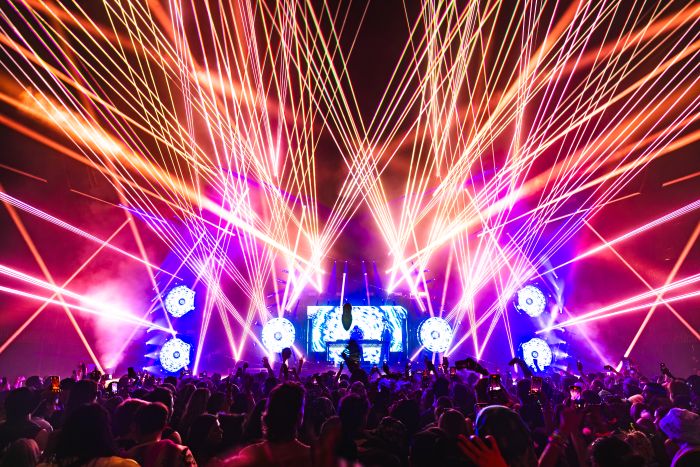Governments around the world always want to keep their unemployment rates down. The reason is simple — a high employment rate causes problematic situations for the economy. It is a sign of underlying issues going on within the economy — predictable or hit by surprise. This article looks at how the high unemployment rate affects the economy.
Who Is an Unemployed Person?
According to the U.S. Department of Labor, an unemployed person does not have a job but has attempted to find work in the last four weeks and is available for work. We can also classify someone as temporarily laid off but expected to resume work later as an unemployed person.
Some do not qualify to be classified as unemployed and are not part of the labor force. They are people who do not have jobs and are not looking for jobs Many not in this category are students going to school or persons retired from the labor force.
Another set of people called Marginally Attached to the Labor force also exists. These sets of people have no jobs — their last job was 12 months ago or within 12 months, but they are available to work. These people do not count as being unemployed but marginally attached to the labor force. They have searched for work in the last 12 months, currently want to work, and are available to work.
What Is Unemployment Rate?
Now that we have defined an unemployed person, what is the unemployment rate? The unemployment rate is the percentage of unemployed workers in the total labor force (employed plus unemployed). We can represent it as a simple formula:
Unemployment Rate= (Unemployed persons/Total labor workforce) x 100.
Types of Unemployment
There are various reasons an individual can be unemployed. This section looks at the types of unemployment.
Frictional
Frictional unemployment occurs when a worker is transitioning into a new role. It can happen when a person gets a job recently and needs time to move or settle before starting at the new place. This also applies to fresh graduates just entering the labor market — before getting a new job. This type of unemployment accounts for a massive proportion of the total unemployment figure.
Structural
Structural unemployment occurs when the jobs available do not match the skill set of those looking for jobs. An example is an agricultural industry, where mechanized farming has replaced human labor. These laid-off laborers may struggle to apply for other jobs that require a different set of skills.
Cyclical
Cyclical unemployment happens because of a decrease in the demand for goods and services. It is a natural response to businesses experiencing economic recession. The recession means less spending power from the consumer, which means a fall in demand and an increase in consumer savings. This may lead to businesses letting some staff members go because of the drop in sales.
Seasonal
Seasonal unemployment happens to those working in seasonal industries. These industries are available only during a specific year and can cause unemployment. Some examples of seasonal industries may include tourism, agriculture, and restaurant. Seasonal unemployment allows for this: People can return to their previous jobs, which are called boomerangs.
Why Is Keeping Track of the Employment Rate Important?
Governments, like profit-making companies, track metrics to respond to them if problems arise. While companies look at them to improve profitability, the government uses such information to track how well the economy is doing. They can use such data to predict the next quarter, prepare budgets, and institute fiscal or monetary policies to support their citizens.
Who Does High Unemployment Rate Affect in an Economy?
In the situation of a high unemployment rate, it affects the unemployed individual, society, and the government. This section looks at how high unemployment affects these different groups.
The Effect of High Unemployment Rate on Individuals
Loss of Income
The first and most logical effect is the loss of income. Loss of income will affect different people in different ways. Those who previously had good-paying jobs could save some money and stay afloat for some months before they run dry. While those who lived from one paycheck to the next are not so lucky, becoming homeless is a real possibility for them.
For both kinds of workers, only necessities will take priority as they seek to reduce spending. Less spending means a drop in demand for goods and services, affecting the economy.
Physical Health Challenge
Loss of income always means trying to save costs at every turn. Sadly, individuals often save costs in ways that are detrimental to their health. Individuals eat more fast food as a cheaper alternative to healthier foods, cut gym memberships to save cost, or skip medications if on drugs.
Unemployment is stressful for anybody. Stress can affect people in various ways, but common symptoms include loss of appetite, headaches, high blood pressure, insomnia, and restlessness. All these symptoms require a trip to the doctor – which unemployed persons might avoid because they do not have insurance coverage anymore and might not be able to pay the hospitals’ astronomical bills.
Mental Health
A 2009 Meta-Analysis shows that losing a job for an extended period can lead to depression, anxiety, psychosomatic symptoms, low self-esteem, and psychological problems. Another study by Gallup shows one in five Americans unemployed for over 12 months or more needs treatment for depression.
A stable job means people can get into schedules, plan their days and finances, and cover their basic needs. When unemployment hits, it causes one to lose control of these essential elements in life. The little money, losing track of time, and constant worries can drive one into depression or, worst of all — suicidal tendencies.
Family Issues
Unemployment can put an enormous strain on family life. A Meta study on psychological and physical well-being during unemployment found that unemployment brought about detrimental changes in family relationships. They also observed diminished quality of life, as well as a high mortality rate among unemployed individuals.
The Effect of High Unemployment Rate on the Society
Lower Economy GDP
A high rate of unemployment may be a signal of other issues the economy is facing. One can be a recession or depression. With a recession, one effect is a reduction in the economy’s GDP. A high unemployment rate leads to a lower production of goods to consume within the economy and export. It also means individuals do not have a lot of purchasing power.
Political Instability
When there is a high unemployment rate, people are quick to point fingers. This can lead to political unrest, especially if a rival political party sees this as getting ahead of their competition. One example was the rise of the Nazi party in Germany during a period when over six million people were unemployed in the country.
Social Unrest
A high unemployment rate can cause social unrest. One way this can happen is an increase in crime rates. Crime rates and mortality rates are typically on the rise during a period of high unemployment. It can range from petty crimes such as vandalism to much more dangerous crimes such as theft and robbery.
The Effect of High Unemployment Rate on the Government
Increase Borrowings
The drop in revenue from taxing income earners and shoppers (VAT) means the country will lose vital revenue streams. When unemployment rates are high, it might tempt the government to borrow from other countries to continue to run the economy. The other option is printing extra notes, although this may cause the value of the denomination to fall. If done without precaution, it can lead to events that happened in countries like Zimbabwe and Venezuela.
May Contribute to Inflation Because of a Monetary Policy
A recent example of this was the announcements of governments of the world of their stimulus packages to help combat Covid-19 unemployment. This contributed to inflation in various parts of the world, from the United States to Germany and Canada.
Conclusion
The effect of high unemployment rates can be detrimental to all levels of society, and it is a reason governments aim to keep it low. The ability of the government to continue to ensure low unemployment rates will depend on how well they manage other elements of the society.
Find a Home-Based Business to Start-Up >>> Hundreds of Business Listings.
















































